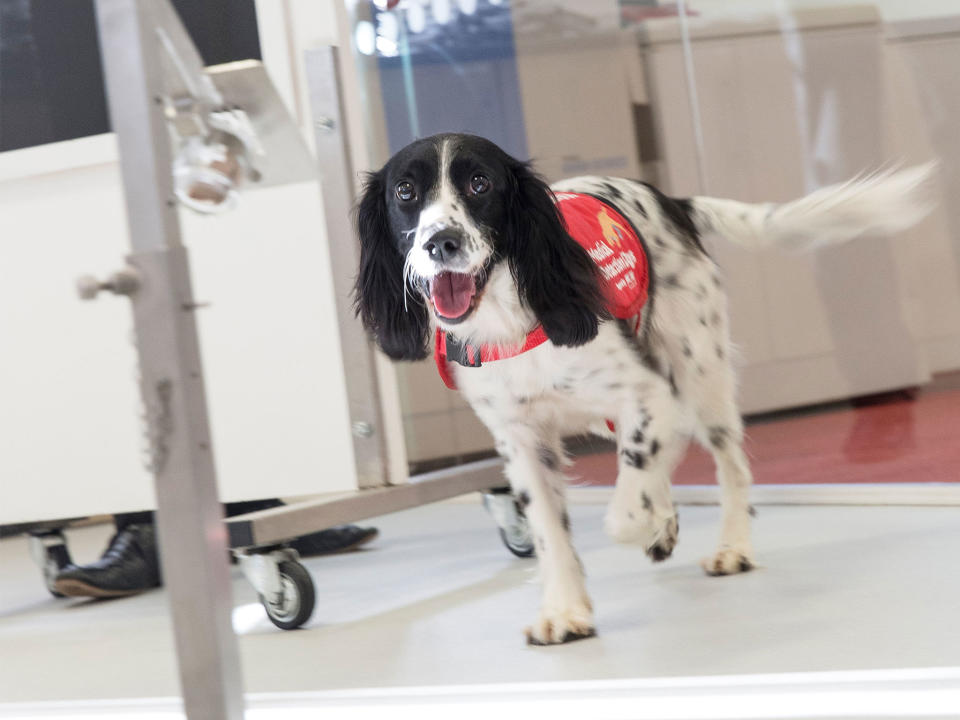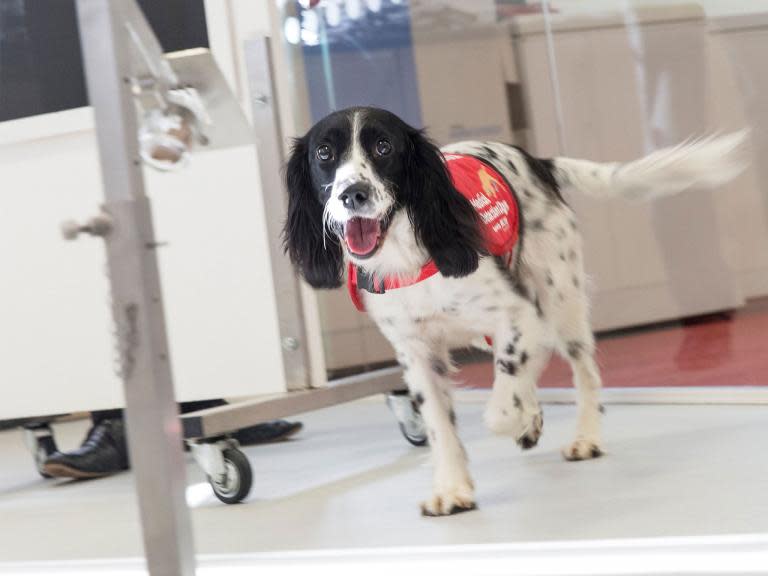Sniffer dogs able to detect malaria in people by smelling socks, study finds
Dogs could be trained to detect malaria in humans by sniffing their socks, new research suggests.
Scientists believe the findings of the new study, the first in which animals have demonstrated the ability to identify a parasitic infection, could potentially lead to the first rapid and non-invasive test for the disease.
Researchers hope sniffer dogs could be trained to stop malaria spreading across borders and help those suffering from the condition receive earlier treatment.
“While our findings are at an early stage, in principle we have shown that dogs could be trained to detect malaria infected people by their odour with a credible degree of accuracy,” said Prof Steve Lindsay, of Durham University, one of the scientists behind the project.
“This could provide a non-invasive way of screening for the disease at ports of entry in a similar way to how sniffer dogs are routinely used to detect fruit and vegetables or drugs at airports.
“This could help prevent the spread of malaria to countries that have been declared malaria-free and also ensure that people, many of whom might be unaware that they are infected with the malaria parasite, receive antimalarial drug treatment for the disease.”
The study saw researchers from the Medical Research Council Unit The Gambia at the London School of Hygiene and Tropical Medicine use nylon socks to collect foot odour samples from apparently healthy children aged five to 14 in the Upper River Region of Gambia in West Africa.
Using a simple finger-prick test, the children were also screened to determine if they had the malaria parasite Plasmodium falciparum in their blood.
The sock samples were transported to the Medical Detection Dogs (MDD) charity in Milton Keynes where two dogs, a Labrador-golden retriever cross called Lexi and a Labrador called Sally, were trained to distinguish between the scent of children infected with malaria and those who were uninfected.
In total, 175 sock samples were tested including those of all 30 malaria-positive children identified by the study and 145 from uninfected children.
The dogs were able to correctly identify 70 per cent of the malaria-infected samples. The dogs were also able to correctly identify 90 per cent of the samples without malaria parasites.
The team said sniffer dogs could provide a non-invasive, portable and rapid test for identifying malaria carriers.
Confirmation of the disease would then be made by taking a finger-prick sample of blood using a rapid diagnostic test.
Since the initial study a third dog, a springer spaniel called Freya, has also been trained to detect the disease.
Nearly half of the world’s population is at risk of malaria, according to the World Health Organisation (WHO).
In 2016, there were an estimated 216 million cases of malaria – an increase of five million cases over the previous year – and an estimated 445,000 malaria deaths. Around 90 per cent of cases are in Sub-Saharan Africa.
The disease is caused by parasites transmitted to people through the bites of infected female Anopheles mosquitoes, but it can be prevented and cured with antimalarial drugs.
Support free-thinking journalism and subscribe to Independent Minds
Study co-author and MDD chief executive, Dr Claire Guest, said its dogs have also been able to detect cancer and diabetes sugar changes.
“This is the first time we have trained dogs to detect a parasite infection and we are delighted by these early results,” she added.
“I believe that this study indicates that dogs have an excellent ability to detect malaria and if presented within an individual infected with the parasite or a piece of recently worn clothing, their accuracy levels will be extremely high.”
Future studies are needed to see if dogs can detect malaria in the odour of infected people from other parts of the world, before the animals could be used in the field, researchers added.
Additional reporting by PA



